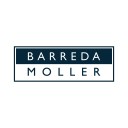Registration of tactile marks

Published byBarreda Moller

Article 134 of Decision 486 sets forth a list of marks which can become trademarks. In this sense, although the cited article does not expressly indicate tactile marks, since the referred list is expository, said list includes textures.
The Court of Justice of the Andean Community has given opinion about registrability of textures (tactile marks) through Pre-judicial Interpretation No. 242-IP-2015, resulting from a consult made by the Superintendency of Industry and Trade of Colombia, with respect to the application for registration of tactile trademark (SURFACE TEXTURE “OLD PARR”), which description was the following:
“Consists in a wrinkled, cracked, hard texture (surface), that is, striated or scraped in the form of an agglomeration of irregular geometric shapes which include mainly, pentagons, rhomboids and hexagons, which shared walls are between 3 and 6 millimeters long, 0,08 and 0,5 millimeters high and between 0,1 and 1 millimeters wide. Walls and areas contained in the walls are smooth. The material in which this texture is used will be normally glass and will be used in different sizes”
The Andean Court considers that in textures (tactile marks) the element to be protected is the surface of the product. Thus, the Court indicates the following in its paragraph 58:
“To be granted trademark protection, said texture must serve to inform about the business source of the product to be distinguished. A determined texture can be granted protection if it is arbitrary and particular in relation to the product it distinguishes; a criterion comprising the non-functionality, or whether it has acquired distinctiveness by the constant use in the market.”
In this regard, after having established the object of protection of the textures applied for registration, the Court states that as to the procedure of registration of tactile marks, the corresponding Office is the one obliged to verify that the mark applied for registration complies with the registrability requirements established by law (possibility of graphic representation and distinctiveness). The Court also states that the competent Office has the authority to demand “the documentation or any other material support necessary to determine with precision the scope of the claimed protection.” It further states that it is total responsibility of the Authority in charge of the Trademark Registration the problems of graphic representation of the mark for purposes of its publication (and possible oppositions) (paragraph 75).
Moreover, the Court of Justice considers that the graphic representation is not a mere technical requirement but it is part of the precision principle. In this way, paragraphs 94 to 96 read as follows:
“(…) a greater precision in the registrations of new types of trademarks outlines more clearly and, consequently, protects better the rights of the owners of registrations of this type of trademarks. More specific registrations and publications of applications for registration will allow entrepreneurs to conduct searches in the trademark registry, discover possible competition in the market and be protected against possible infringement cases before investing high amounts of money in the development and promotion of new trademarks. Moreover, the precise definition of the trademark informs competitors and trademark owners of possible infringement cases, thus reducing and, possibly, preventing the risk of consumer confusión.
Graphic representation also helps the authorities in the examination of registrability and, eventually, in protecting the trademark against non-authorized uses by other competitors. The requirement of graphic representation allows a precise definition of the trademark, so that the trademark owner, consumers and competitors can check the protection scope granted to the trademark by its registration, or the protection scope requested, by its publication.
Graphic representation is likewise important for new types of trademarks, since it guarantees that the scope and nature of the trademark are clearly defined and understandable so that third persons, conducting searches in the trademark registry, be able to clearly identify what has been registered, that is, the object of protection” (paragraphs 94 to 96).
Finally, in the Pre-judicial interpretation, it is stated that part of the obligation of the National Offices, is to allow and facilitate the access of people to the mark, without specifying the means through which said access is performed, provided two requirements are met: (i) clear, precise and complete description of the texture, including a three-dimensional drawing or photography of the mark; and, (ii) physical sample of the object containing the texture. This is pointed out in paragraph 105:
“The National Competent Office should comply with the two requirements previously mentioned and allow the access of users to the physical sample of the applied-for mark so that they can get to know and verify if the same violates or not their rights. In this way, if these two requirements are applied, the graphic representation required by Decision 486 would be met and an effective publication would be achieved.”

